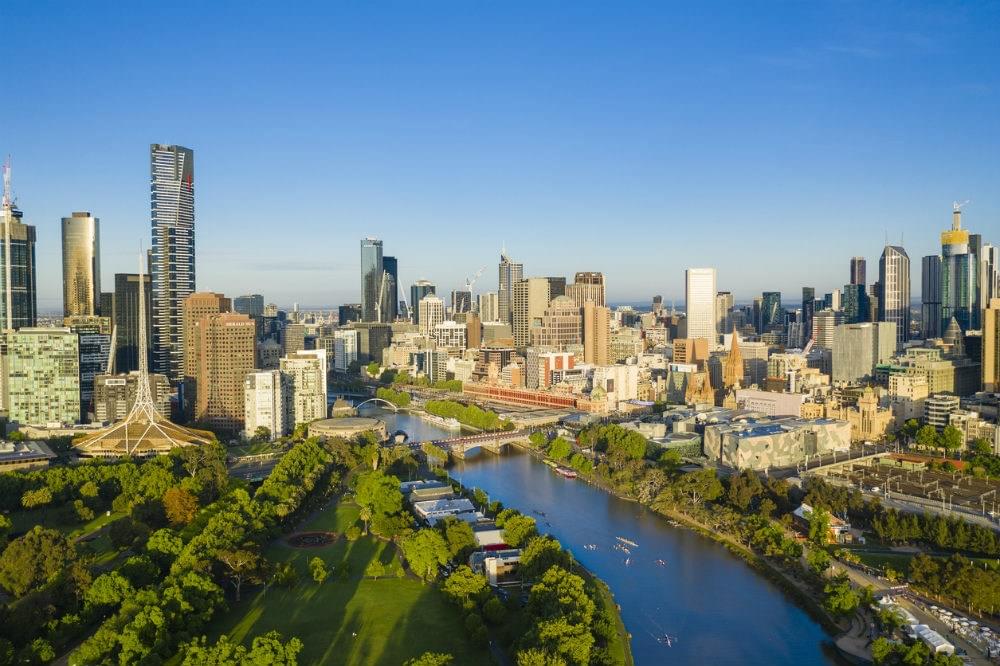Melbourne and VIC property market update - April 2020
Throughout April and now into May, Stage 3 restrictions have been in place in Victoria. The impacts of coronavirus on the property market have been clear. The state government has asked for in-person real estate auctions and open inspections to stop, meaning market activity has gone down.
However, it’s not all bad. With real estate agents adapting to the coronavirus changes, transactions are still able to go through. Both buyers and sellers are active in the property market despite COVID-19.
The latest news on the Melbourne housing market has shown some glimmer of hope. We explore how the coronavirus has affected house prices, market activity and the rental market.
Here’s what’s happening in the Melbourne property market

Houses
$818,806
Monthly change: -0.4%
Units
$588,204
Monthly change: +0.1%
In April, Melbourne dwelling values decreased by -0.3% overall, the only capital city other than Hobart to see a drop. However, prices are still up +1.4% for the quarter and +2.6% YTD. The current median dwelling value is $695,761.
CoreLogic’s stratified hedonic index shows that the biggest drag on dwelling values was actually the more expensive housing markets. The upper quartile market in Melbourne was down -0.8% in April, whereas the lower quartile and middle of the market saw an increase in value.
For houses, the Melbourne property market has seen a -0.4% drop over April. On the other hand, units actually went up +0.1% last month. Houses sit at a median of $818,806, and units sit at a median of $588,204.
In April, Melbourne dwelling values decreased by -0.3% overall, the only capital city other than Hobart to see a drop.
Last week, only 210 properties went to auction in Melbourne. Of these, CoreLogic reported a preliminary success rate of 63.0%. This is significantly better than the 27.9% clearance rate for Melbourne’s 144 auctions the week before.
FrontierSI/UNSW have compiled a data dashboard that shows the weekly total value of housing property auction sales across the capital cities. For Melbourne, the value has been dropping since the middle of March. On the flip side, the dashboard also highlights clearance rates, median price, and home value index, which all look more optimistic for Melbourne.
Here’s what’s happening in the regional VIC market
Houses
$414,759
Monthly change: +0.8%
Units
$293,947
Monthly change: +1.4%
The past month in regional Victoria’s property market has been better than in the capital city with a +0.9% increase in dwelling values. Over the past quarter, prices have gone up by +2.4%, and YTD, by +3.3%. The median dwelling value is currently $392,268.
These changes are made up by a +0.8% increase in house values and a +1.4% increase in unit values over April. The median house price is about $414,759, and the median unit price is $293,947.
Melbourne and VIC rental market update
Unfortunately, the rental market in Melbourne hasn’t done too well in April. There has been higher supply and lower demand, leading to lower rents over most of the capital cities, according to CoreLogic.
Melbourne had the fourth largest decrease compared to Australia’s other capital cities with a -0.5% decrease in rent prices. The latest monthly rental data from the REIV shows that metropolitan houses are now more affordable at $470 per week, down from $480 per week in February. Median rents for regional VIctorian houses remain unchanged at $350 per week.
"Melbourne and Sydney markets are particularly at risk due to less overseas migration and a downturn in foreign students."
Vacancy rates are also rising. Melbourne and Sydney markets are particularly at risk due to less overseas migration and a downturn in foreign students.
ABS migration data found that 99.5% of the population increase over 2018-19 in Inner Melbourne came from overseas migration. With the council no longer being able to rely on this source to maintain stable rental conditions, rental markets are at risk.
Rental listings have gone up in Inner Melbourne by +36.2%, the highest for any region in Australia. To compare, the number of properties going up for rent across Australia as a whole has only increased by +0.8%.
Annually, rents in Melbourne are still up +0.7% and gross rental yields currently sit at an average of 3.2%. In regional Victoria, gross rental yields are about 4.5%, the lowest compared to the other regional areas.
Victorian Government on COVID-19 for tenants and landlords
The Victorian Government has put into effect the COVID-19 Omnibus (Emergency Measures) Act 2020 with new laws for tenants and landlords. These apply for six months from the end of March.
“New rules cover a moratorium on evictions, rent relief for eligible tenants, suspension of rental increases, land tax reductions and deferrals for landlords, and a new dispute resolution process,” according to Consumer Affairs Victoria.
What does this mean and what can you expect?

Overall, there has definitely been a sharp decline in market activity and consumer sentiment. Plus, for Melbourne in particular, prices for dwelling values overall have already gone down, and will likely continue to fall if the current conditions get worse.
However, the property market in Australia as a whole has remained resilient despite all the changes in the economy. The extent to which housing values fall will depend on when and how much restrictions are eased. Though the exact time is uncertain, property prices will bounce back.
According to CoreLogic’s head of research, Tim Lawless, demand for rental property is expected to continue stalling and supply is expected to remain high. This indicates weaker conditions for Australia’s rental market for the coming months.
“The Australian version of this global health and economic crisis is only a month-and-a-half old, and it looks inevitable that there will be some downwards pressure on housing values over the coming months,” said Tim Lawless.
“The good news is that Australia has managed to flatten the spread of the virus more effectively and efficiently than expected and we are already seeing a subtle easing of social distancing policies in some states. An early return of economic activity should support a lift in consumer spirits which in turn should see housing market activity sparking back to life.”
"No doubt we’ll see a short term negative impact on prices, but ultimately, in 12 months time, prices are going to be more than where we’re at now. "
Leanne Pilkington, President of the Real Estate Institute of NSW told Elite Agent that despite some of the headlines that have been coming out, she feels property will hold firm.
“I agreed with a lot of what was said in the paper, particularly around when property was going to be hit the most. No doubt we’ll see a short term negative impact on prices, but ultimately, in 12 months time, prices are going to be more than where we’re at now.
“This is a crisis like no other and when we had the likes of the GFC, the end-point wasn’t certain. In this case, we do have an endpoint, but we don’t know how many businesses won’t come back from this,” she said.
“With interest rates at historical lows and the property market already recovering, I think it is likely that prices will continue to grow when we get on the other side.”
Victorian government COVID-19 modelling and current situation
Recent modelling from the Department of Treasury and Finance forecasts that the economy isn’t looking too positive if the current restrictions remain in place for six months. In general, it’s expected that 270,000 jobs could be lost in the September quarter and the gross state product could drop by -14% relative to other predictions.
For the property market in particular, the same modelling suggests there will be some price drops, despite values remaining relatively stable last month. It’s predicted that by the end of the year, prices could fall up to -9%. However, the Opposition suggests that this is only the worst-case scenario.
For daily updates on COVID-19 cases, visit the Victoria State Government Health and Human Services.








